Note: This website was automatically translated, so some terms or nuances may not be completely accurate.
The front lines of Asia's automotive market. From the two major motor shows in Bangkok and Shanghai.
It's been a year since last year's Beijing Motor Show 2024 report. The intense focus of companies on Asia, not limited to the mobility sector, is palpable even in daily news. This year, in addition to China (Shanghai), we visited the ASEAN (Bangkok) motor show on-site.
Focusing on key factors shaping the future of the mobility industry—the rapid evolution of AI technology, the acceleration of electrification, and the competition and collaboration between Japanese, Chinese, and Western manufacturers—we examine the latest trends in these two crucial markets: ASEAN and China.
[Bangkok] Characteristics of ASEAN's "Grand Sales Event"
The Bangkok International Motor Show 2025 ran from March 26 to April 6. With over 1.6 million total visitors, its defining characteristic as a "mass sales event" stood out distinctly from other motor shows. In Thailand, where auto sales have been stagnant, the show's biggest feature was its role as a practical car sales event where orders could be placed on the spot. During the 12-day event, 79,000 vehicles (a 44.8% increase year-on-year) were reserved for sale.
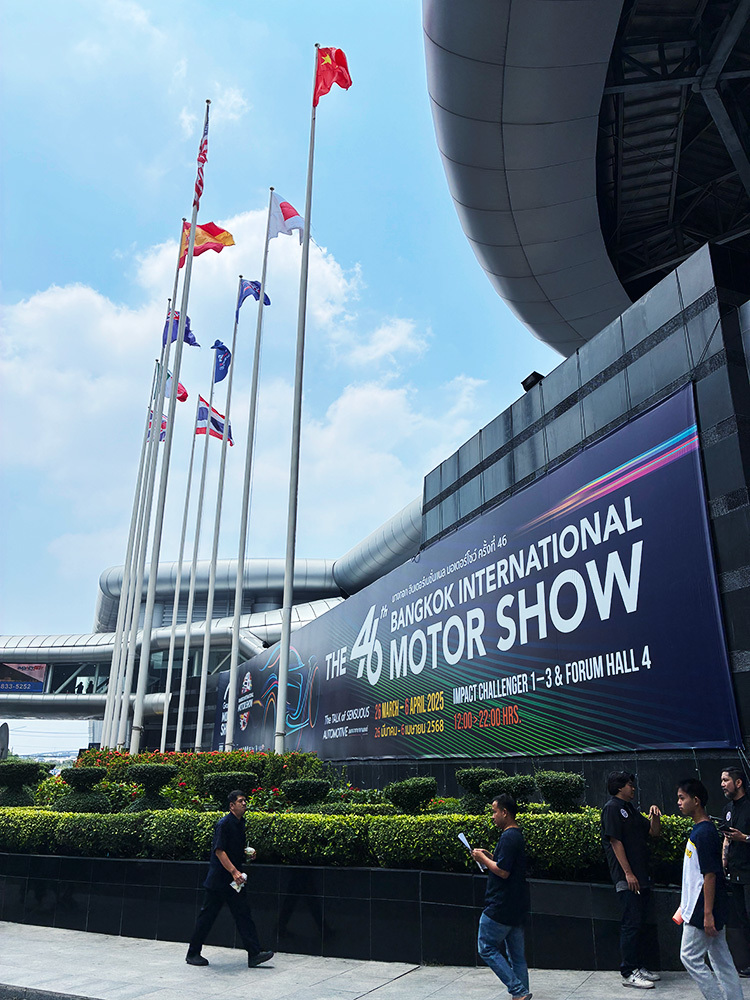
- BYD overtakes Toyota as top seller
The most attention-grabbing development was undoubtedly Toyota, long the leader in the Thai market, relinquishing its top position for the first time, with BYD becoming the top seller by volume. BYD sold 9,819 units, while Toyota sold 9,615 units, a very close margin, marking a historic turning point in Thailand's automotive market. The top five were BYD and Toyota, followed by GAC with 7,018 units, DEEPAL with 6,067 units, and Honda with 5,948 units, highlighting the strong showing of Chinese manufacturers.
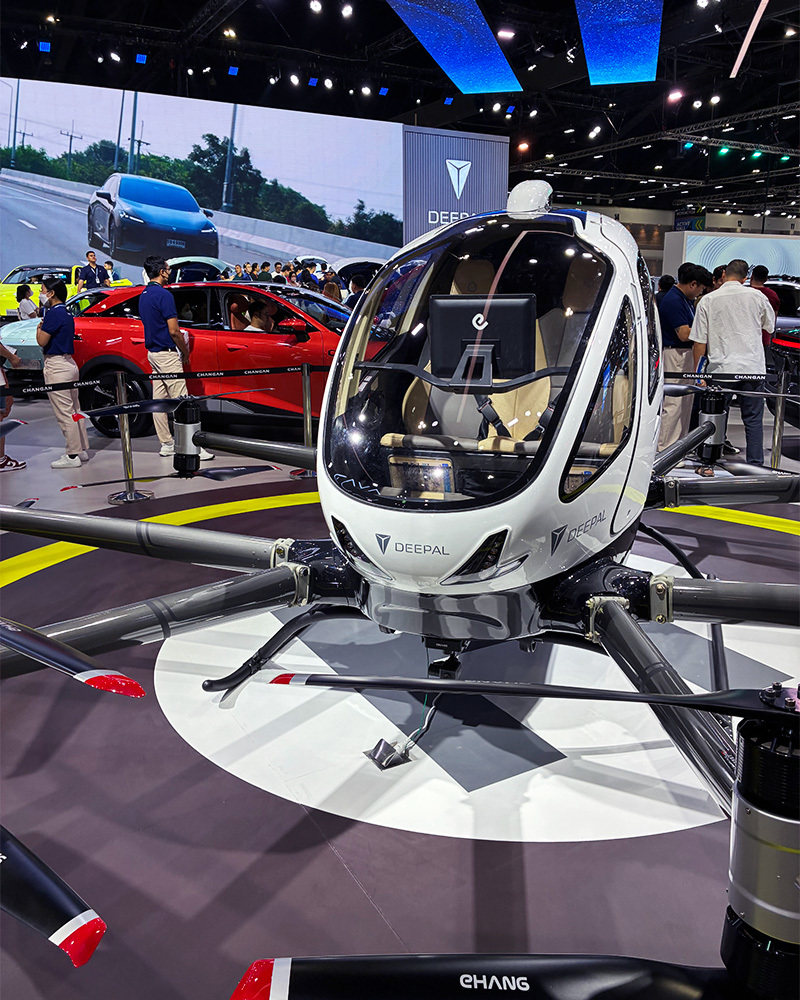
- Aggressive Sales Strategy by Chinese Manufacturers
Why did this happen, even though Japanese cars still dominate the streets of Bangkok? One reason is that Chinese manufacturers aggressively expanded their market share through discounts. BYD ran a campaign offering discounts of 110,000 baht (approx. 470,000 yen) on its compact EV Dolphin and 150,000 baht (approx. 730,000 yen) on its SUV Sea Lion 7. Great Wall Motors (GWM) offered a wide range of benefits for the HAVAL H6, including a free insurance package, charger, and maintenance service.

- Motorcycles and Cars Together
Another feature of the Bangkok International Motor Show is the significant number of motorcycle exhibits alongside automobiles. ASEAN countries, including Thailand, have high motorcycle penetration rates, and numerous motorcycle manufacturer booths were set up. Japanese manufacturers like Honda, Yamaha, Suzuki, and Kawasaki displayed their motorcycles, alongside local brand bikes.
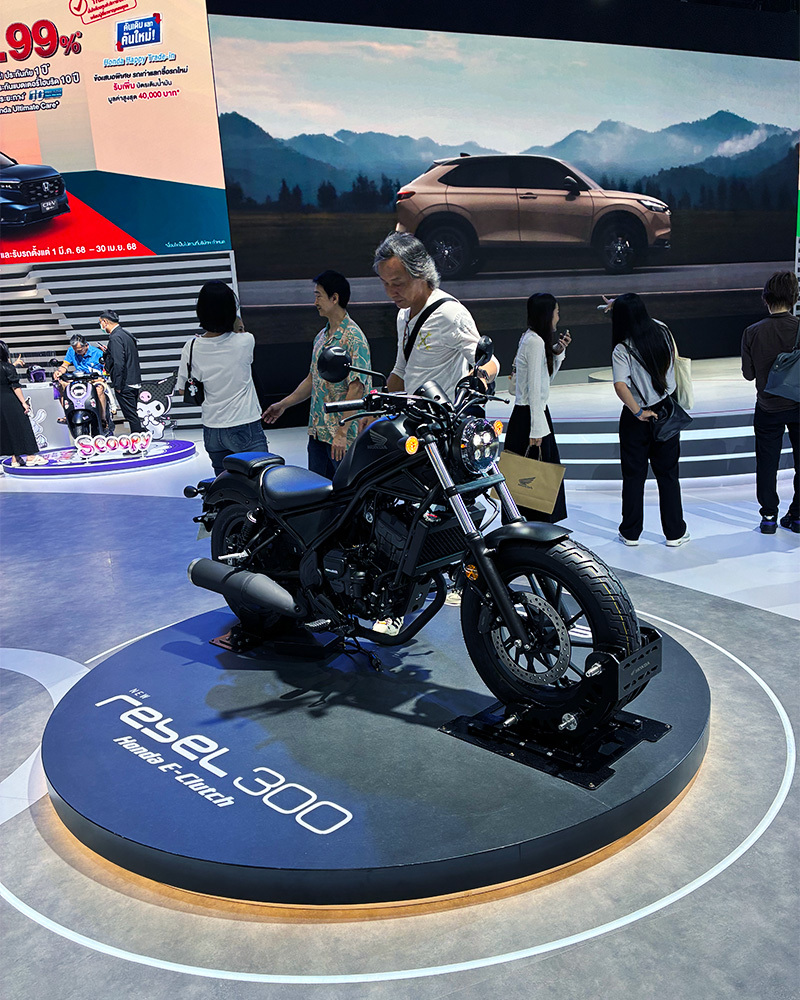
- Chinese manufacturers' diverse brand expansion and AI technology collaboration
Additionally, Chinese manufacturers showcased multiple brands with separate booths. BYD displayed its main brand alongside premium EV brands Yangwang, DENZA, and Fangchengbao. A special stage, BYD Lab, featured a driving demonstration in flood conditions.
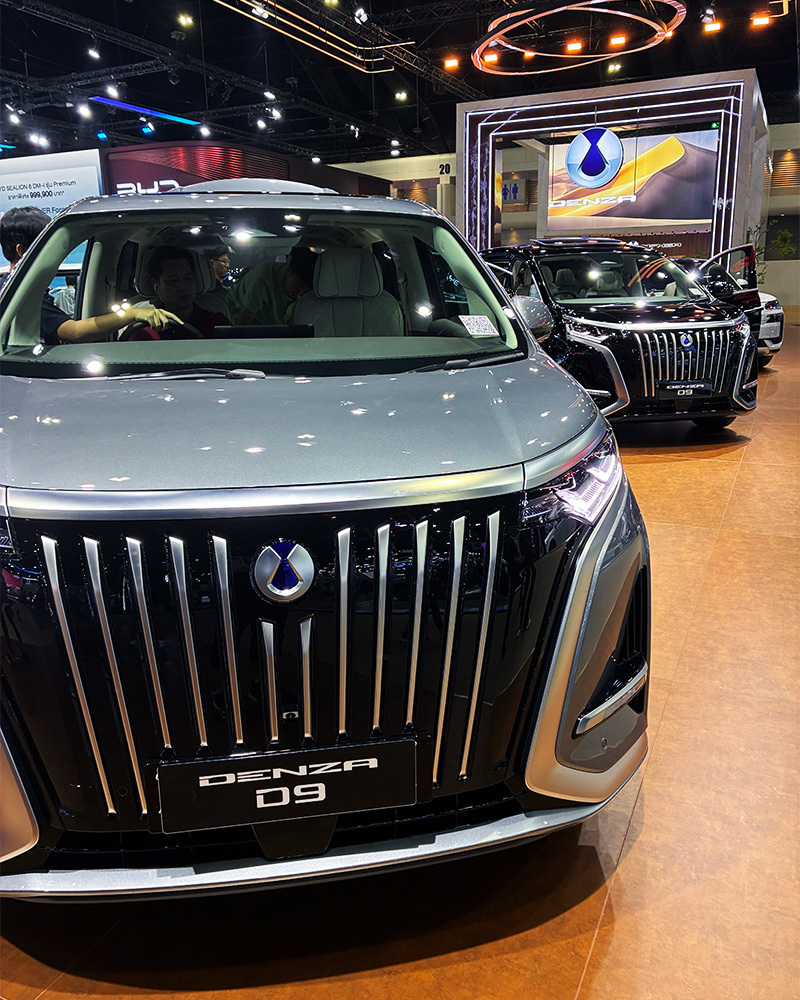
Meanwhile, emerging brands like Xpeng and Geely's increasingly prominent ZEEKR also set up large booths, showcasing numerous vehicles equipped with Huawei's HMS system. These displays featured demonstrations of smart car technology combining onboard cameras with AI, offering visitors new technological experiences.
Another major feature of this show was the collaboration between multiple Japanese manufacturers and Chinese AI companies to develop advanced in-vehicle systems.
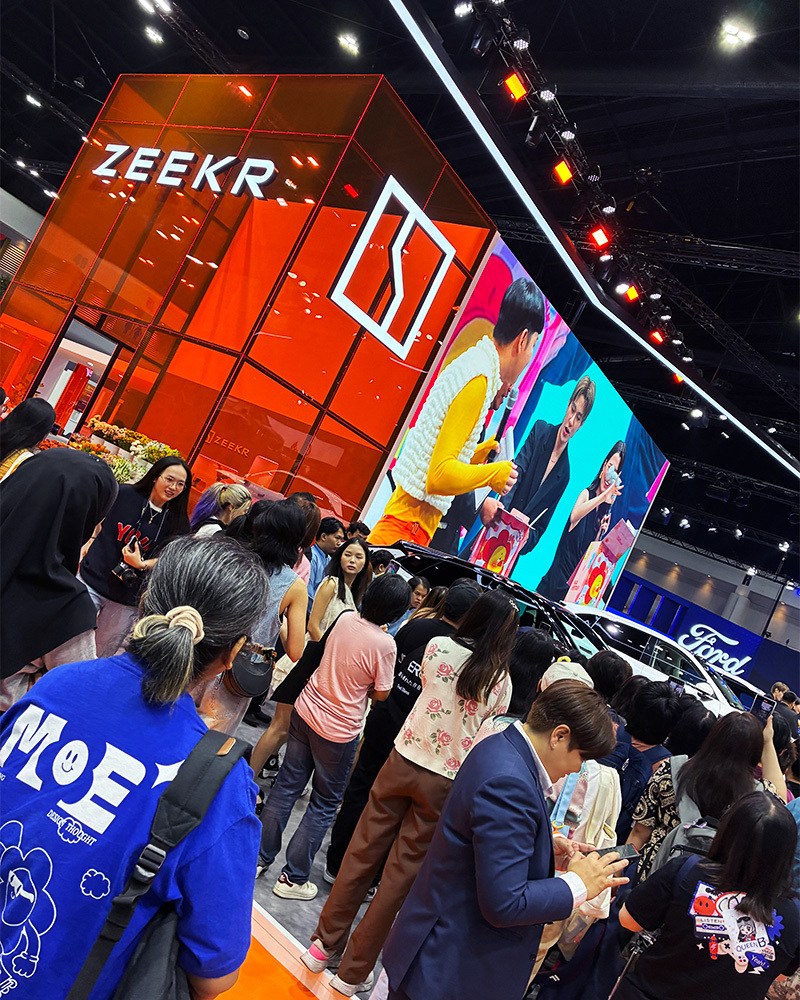
[Shanghai] Innovation in the Chinese Market
The Shanghai International Motor Show 2025 took place at the Shanghai National Exhibition and Convention Center from April 23 to May 2, approximately one month after the Bangkok event. Spanning a vast 360,000 square meters, the event featured 13 exhibition halls. Nearly 1,000 companies from 26 countries and regions participated, unveiling a total of 163 new models. Unlike the "sales event" format in Bangkok, the Shanghai Motor Show has a character more focused on technology displays and new product launches.
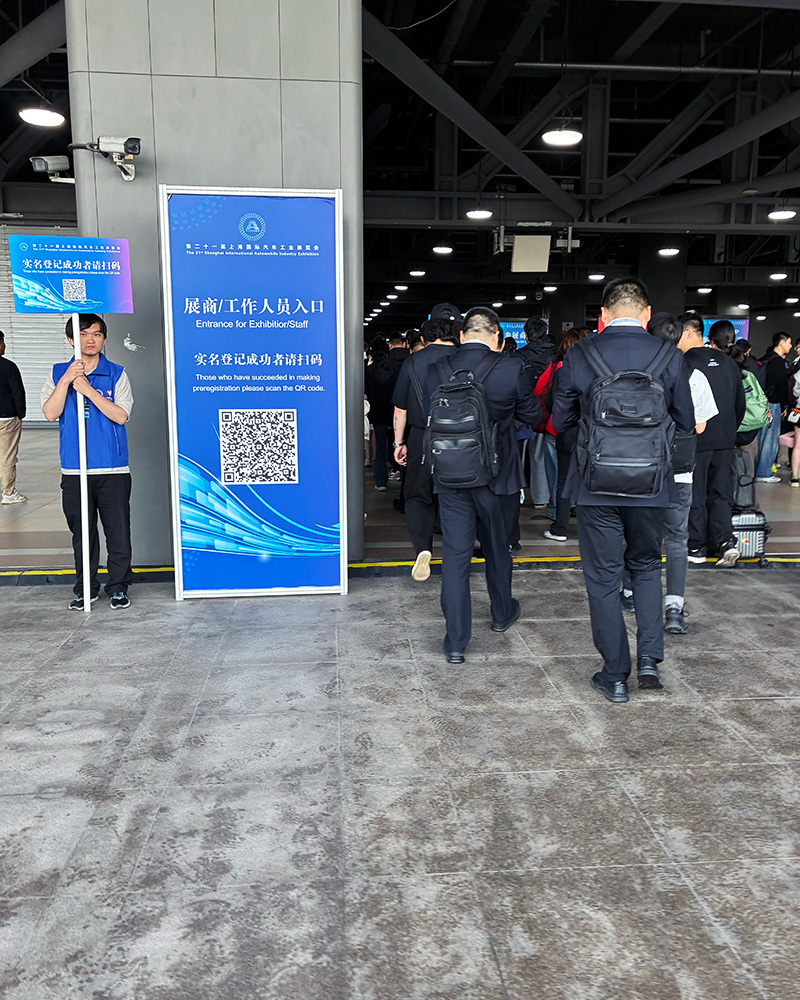
- The Convergence of "Smart," "Electric," and "Connected" and Evolution Since Last Year's Beijing Motor Show
The most notable trend at the Shanghai Motor Show was the evolution of AI-driven mobility, integrating "smartification," "electrification," and "connectivity." Compared to last year's Beijing show, the most significant advancement was the rapid shift from proof-of-concept (PoC) to practical application, centered on "End-to-End (E2E)" autonomous driving technology where AI handles everything from perception to decision-making and operation. Many technologies that were merely concepts last year are now being implemented in production models within just one year, offering a glimpse into the rapid development and fierce competition within the Chinese market.
XPeng Motors eliminated LiDAR (high-performance radar), while HUAWEI increased its deployment, indicating that companies are currently exploring the balance between performance and cost. These sensor technologies, showcased as "future technologies" in Beijing, were treated as "current options" in Shanghai, impressively demonstrating the rapid pace of technological maturation.
Furthermore, automotive AI powered by large language models (LLMs), which last year centered on concept models, has evolved into a "AI-driven" norm. This year saw numerous mass-produced vehicles featuring standard Chinese-made models like DeepSeek.
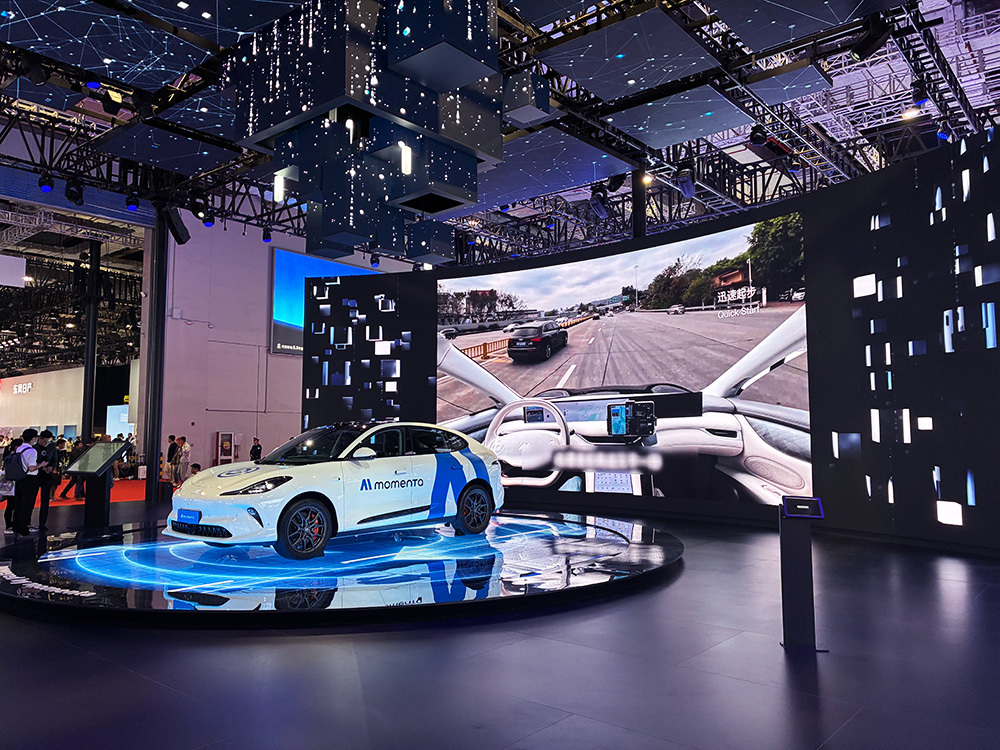
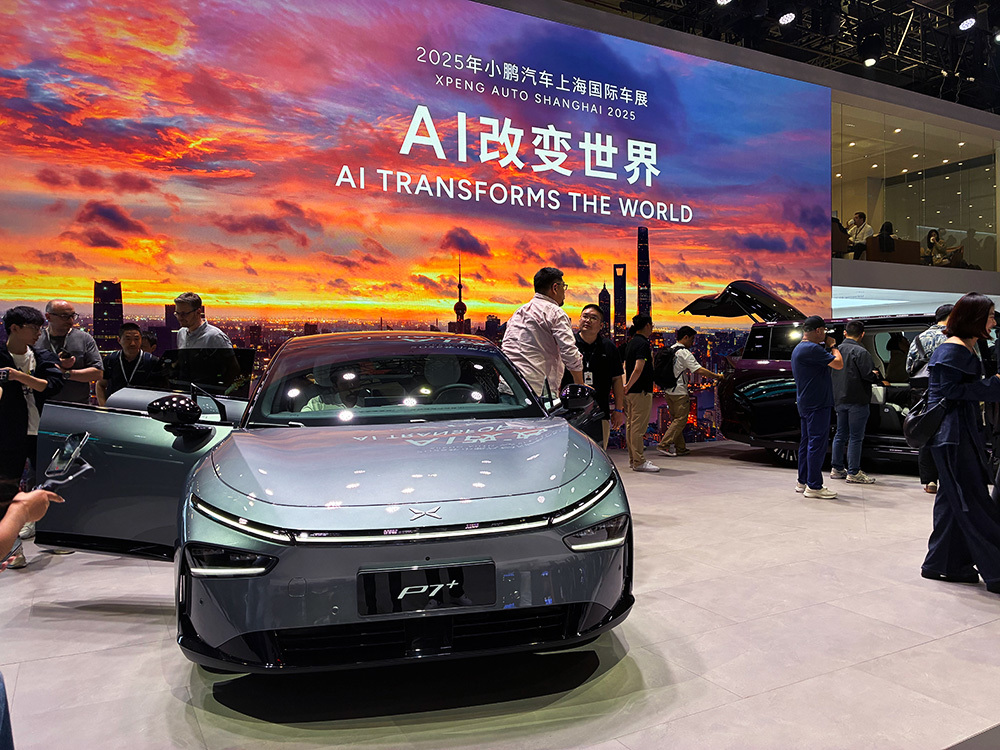
- Chinese manufacturers expand market share
Chinese manufacturers, leading in electrification and smart technology, showed momentum approaching 70% of the domestic market share at the Beijing Motor Show, up from 60% a year ago – a nearly 10-point increase. Particularly noteworthy was their entry into the premium market: BYD unveiled the Yangwang U8 extended version, a luxury SUV priced at 1.098 million yuan (approximately 22 million yen), while ZEEKR introduced the ultra-luxury SUV 9X, signaling a challenge to Rolls-Royce.
While "premiumization of Chinese brands" was still in its nascent stages at last year's Beijing show, this year's Shanghai Motor Show positioned it as an established market segment, illustrating the rapid ascent of Chinese manufacturers.
- German Brands' China Strategy Shift: BBA's New Challenge
German premium brands BBA (Mercedes-Benz, BMW, Audi) also clarified major strategic shifts in Shanghai. Notable accelerations include "localization" and "collaboration with tech companies." BMW emphasized China-led development of the iX3, highlighting its next-generation ultra-sensory smart cockpit and partnership with HUAWEI (Harmony OS). Mercedes-Benz announced its next-generation electric vehicle platform (MMA) and declared an expansion of its Shanghai development base. Audi also revealed that its new Q5L will feature HUAWEI's advanced driver assistance system, ADS 2.0. We will be watching closely for future developments in this challenging Chinese market.
- BYD's Innovative Technologies and a Year of Technological Evolution
BYD drew significant attention at this Shanghai Auto Show by showcasing multiple innovative technologies that defy industry norms. The "ultra-fast charging technology," previously presented as a prototype in Beijing, was now demonstrated as a practical solution capable of charging in just five minutes—equivalent to refueling a gasoline vehicle.
Furthermore, BYD presented its drone-equipped EV, previously shown as a concept in Beijing, in a near-production form in Shanghai. It demonstrated future-oriented functionality: a drone capable of automatic takeoff and landing from the vehicle detects surrounding traffic conditions and obstacles, providing information to the driver.
Even more surprising was the announcement of an independently developed flat engine, which received no mention last year. Traditionally, this high-performance engine configuration has been adopted only by select manufacturers like Porsche and Subaru. BYD announced its own flat engine developed specifically for PHEVs, demonstrating its high technical prowess.
Thus, within just one year of transitioning from Beijing to Shanghai, Chinese manufacturers have evolved at an astonishing pace from "future-oriented concepts" to "production-ready practical technologies," highlighting the remarkable speed of their technological development cycle.
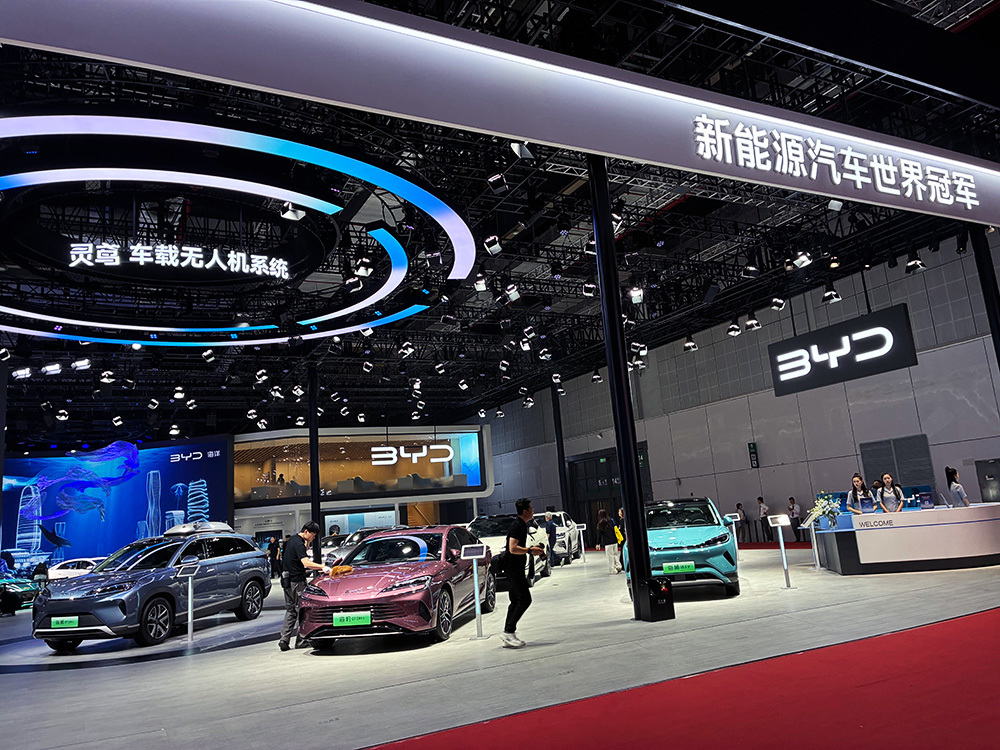
- Japanese Manufacturers' Response and Collaboration with Chinese Firms
Japanese manufacturers are also intensifying their localization strategies to regain ground in the Chinese market, unveiling plans to expand collaboration with Chinese companies even further than at the Beijing show.
Honda unveiled the Honda GT, the second model in its China-exclusive EV series, the Yue (烨) series, for the first time globally. It also announced joint development of advanced driver assistance technology with Chinese autonomous driving startup Momenta. Compared to last year's Beijing Auto Show, where Honda showcased its in-house developed autonomous driving system, this represents a significant strategic shift. Additionally, Honda adopted the Chinese AI engine DeepSeek to enhance the performance of its voice dialogue functions. This strategy drew attention as a balanced approach that incorporates the strengths of Chinese tech companies while maintaining Honda's unique brand value.
Toyota also unveiled the BEV bZ7 and the new Lexus ES globally to enhance its presence in the Chinese market. Notably, the bZ7 was co-developed with Guangzhou Automobile Group, GAC Toyota, and Toyota's local R&D hub, the Toyota Intelligent Electric Vehicle R&D Center, and features HUAWEI's Harmony OS vehicle operating system. Compared to last year's Beijing event, where Toyota prominently featured its own platforms like Arene, this move signifies a clear shift from independent development to prioritizing partnerships. Toyota also announced its Regional Chief Engineer (RCE) system, introducing Chinese chief engineers and emphasizing localization in R&D.
Compared to last year's Beijing event, Japanese automakers as a whole have strengthened their "market adaptation through local collaboration," reflecting a strategic shift to survive in the Chinese market.
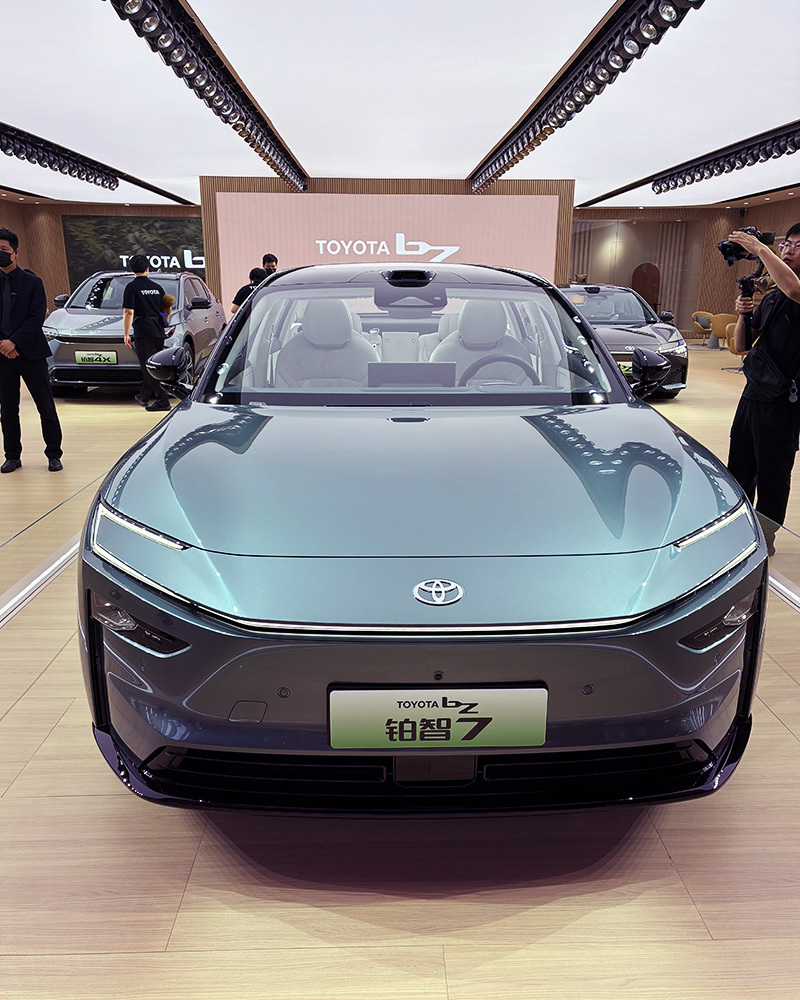
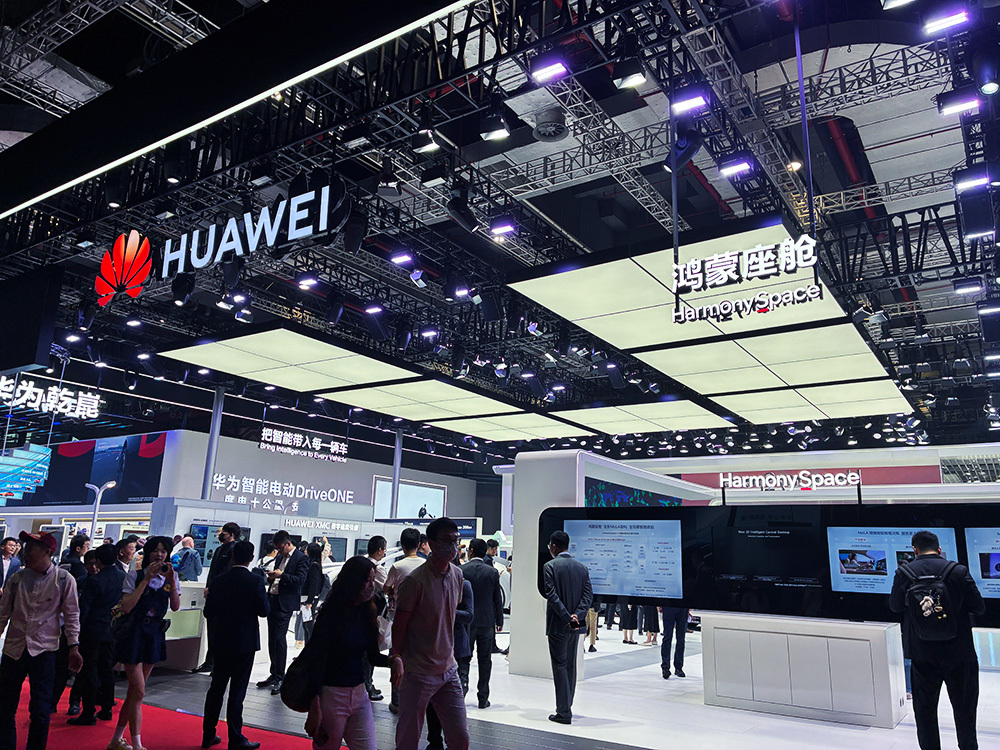
- "Flying cars" enter the realization phase: Evolution of eVTOL technology
The exhibition of electric vertical takeoff and landing (eVTOL) vehicles, often called "flying cars," showed progress from mere concepts to practical application. Chery highlighted its body design, which separates and combines the wings, cockpit, and car body into three parts, enabling flexible operation according to the situation. XPeng Aeroht, the flying car division of XPeng Motors, also displayed its latest prototype, highlighting that it has already successfully completed unmanned test flights. Hongqi and others also exhibited flying cars at their booths. What's interesting is that these companies are applying the electrification and AI technologies they cultivated as automakers to air mobility, suggesting the boundaries of the automotive industry are rapidly blurring.
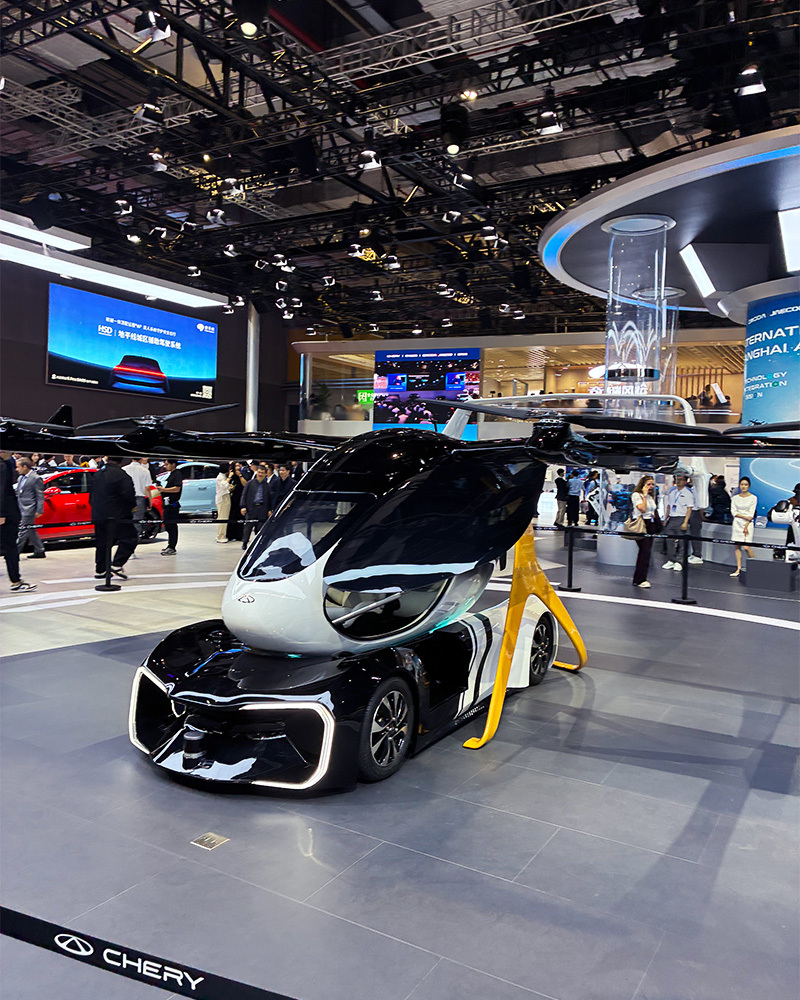
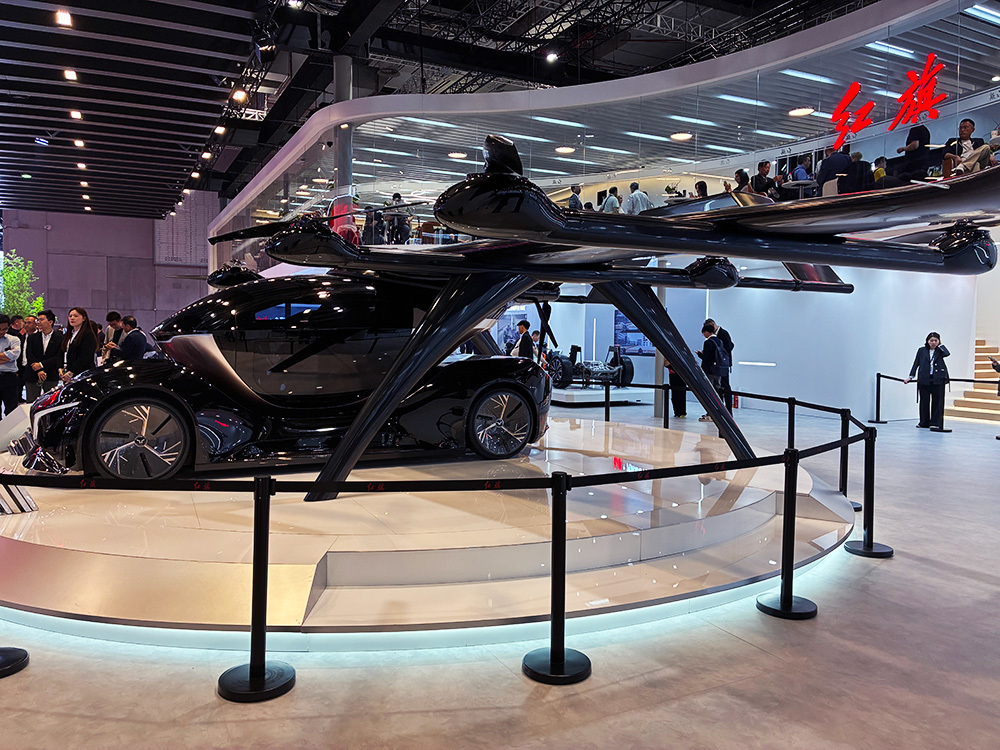
- New Trend in Influencer Marketing: "Uniformed" Information Outreach
A defining feature throughout the Shanghai Motor Show was the presence of influencers wearing brand-uniformed shirts. Young people in shirts bearing distinct brand colors could be seen broadcasting live for social media at various booths, functioning as a de facto "second PR team" – a striking sight. They are establishing a new form of information delivery: not only explaining vehicles, but also test-driving exhibits and operating features on behalf of viewers unable to attend, providing real-time feedback. This exemplifies how China's "digital-first" approach in auto sales is permeating the marketing sphere.
[Differences Between Bangkok and Shanghai] Comparing Electrification/Smart Features Across Both Markets
Next, we examine the characteristics and differences between the two motor shows and markets.
- Differences in Exhibition Character and Consumer Behavior
Bangkok has a strong "sales event" character, functioning as a place where local consumers actually purchase vehicles. Many displayed cars feature price tags, with discounts and incentives prominently displayed. It also showcases a large number of motorcycles, reflecting ASEAN transportation conditions. Shanghai, on the other hand, strongly emphasizes its role as a showcase for the latest technologies and new product launches. Its robust media press days and the advanced nature of its technology exhibits are particularly striking.
- Differences in Electrification Progress and Focus
In the ASEAN market, centered on Thailand, HEVs and PHEVs remain dominant, with the shift to full BEVs proceeding gradually. The sales ratio of xEVs (BEV, HEV, PHEV, FCEV) at the Bangkok Motor Show was 65%, while pure internal combustion engine vehicles accounted for 35%, clearly indicating a transitional phase. In contrast, BEVs have already become mainstream in the Chinese market, shifting the competitive focus to autonomous driving technology and AI applications. At the Shanghai Motor Show, cutting-edge technologies like "E2E" autonomous driving were the center of attention. Within a year since Beijing, the topic of "electrification" has become commonplace, and the competitive focus has completely shifted to "smart/intelligent" features.
- Differences in Japanese Manufacturers' Positions
Japanese manufacturers still hold strong market share in ASEAN, but face intense competition in China due to the rapid rise of Chinese manufacturers. While BYD surpassed Toyota in pre-orders at the Bangkok Motor Show, the difference was only about 200 units, and Japanese brands maintain a strong overall share across Thailand.
Conversely, at the Shanghai Motor Show, Chinese manufacturers' presence was overwhelming. Japanese manufacturers clearly demonstrated their intent to defend their market position by strengthening collaborations with Chinese companies. Over the year between the Beijing and Shanghai Motor Shows, Japanese market share in China further contracted, underscoring the growing importance of collaboration strategies.
- Japanese Strengths and Opportunities
While Japanese automakers continue to face challenges similar to their German counterparts, where do their strengths and opportunities lie?
One is leveraging their strengths in ASEAN. They can implement strategies capitalizing on their high brand trust and established sales networks in ASEAN. Compared to their struggles in China, they still hold an advantage in ASEAN and aim to deploy their new EV models within this favorable position.
Second is deepening collaboration with Chinese AI companies. By partnering with Chinese AI firms like Momenta and DeepSeek, Japanese automakers can catch up in AI technology and create vehicles that resonate with Chinese consumers, including design. Within the year since the Beijing Motor Show to the Shanghai Motor Show, this collaborative model has already yielded significant results.
Third is the advantage of the multi-pathway strategy. Leveraging the strength of Japanese manufacturers to offer diverse powertrains (HEV, PHEV, BEV) is an effective strategy. Particularly in the ASEAN market, this diversity translates into a competitive edge. Furthermore, the abundance of options will likely be a positive factor amid the uncertainty surrounding the future of BEVs.
[Finally] The Future of the Asian Mobility Market
The motor shows in Bangkok and Shanghai serve as mirrors reflecting the present and future of the Asian mobility market.
While unforeseen developments may unfold by this time next year, current projections indicate the growing importance of "AI-first strategy development" and the essential shift toward AI-centric development strategies. This trend will likely extend to the ASEAN market. "Strengthening ecosystem-based collaboration" is also indispensable. Manufacturers face limitations in standalone technology development, making ecosystem-based partnerships with specialized firms like DeepSeek and Momenta crucial. In this regard, the evolution of collaboration strategies demonstrated by Japanese manufacturers in Shanghai represents a step in the right direction. "Differentiation strategies tailored to market characteristics" are also crucial. Understanding the distinct characteristics of the ASEAN and Chinese markets and building differentiated strategies suited to each is key to success. China demands collaboration and AI technology, while ASEAN requires a multi-pathway approach and reliability.
As competition intensifies in the Asian mobility market, the pace of technological innovation is accelerating. What kind of future will Japanese and Chinese players, supported by their tech companies, create? We conclude this report looking forward to the surprises likely to emerge from the upcoming Japan Mobility Show this fall and next year's motor shows in China and Bangkok.
Was this article helpful?
Newsletter registration is here
We select and publish important news every day
For inquiries about this article
Author

Hideaki Anazawa
Dentsu Inc.
Global Business Center
Planner
After gaining planning experience across DENTSU SOKEN INC.'s Strategic Planning, Promotion, and PR solution divisions, he was seconded to the marketing department of a major automaker where he worked on global branding. Following a stint as a planner at Dentsu Beijing, China, he has been responsible for global integrated planning at his current position since 2022.


